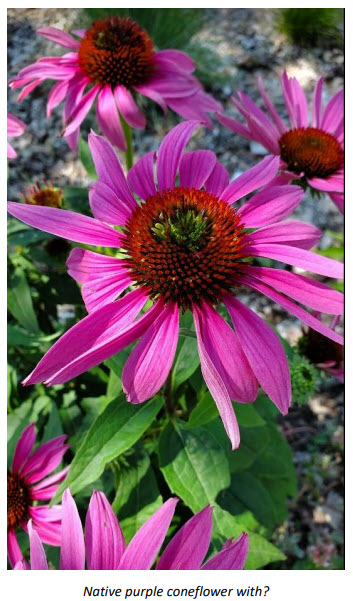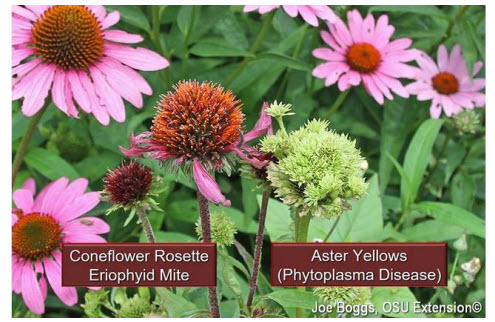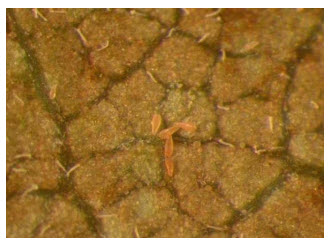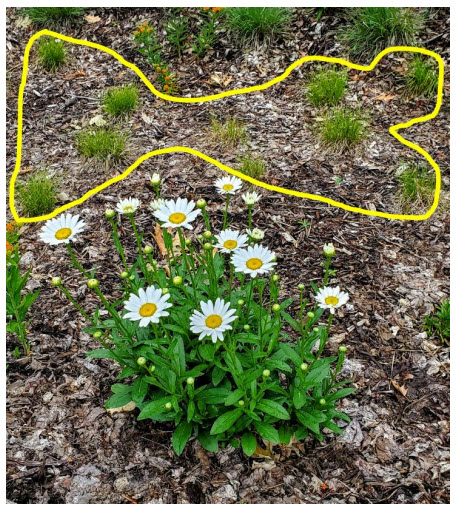Click below to listen to my show/podcast: Aster yellows or mites? A special Garden Bite
What is that weird growth? The fear that creeps in when you see some weird growth on an otherwise beautiful coneflower is real!

My first thought was Aster Yellows, a dreaded disease spread by aster leafhoppers. The disease severely deforms plants and is incurable. It mostly affects plants in the aster family, but all plants are susceptible. When I became a Master Gardener (a while ago) it was drilled into us that you always use University based information when speaking with gardeners. To this day, that is my go-to. I also realized early on that you must be at least 108 years old before you know everything… and then realize you will never know everything about plants and gardening! Which adds to the drama or my idea of fun.

The plants are not stunted, they still look healthy except for that weird growth. So, what’s going on? A little research shows that it’s most likely caused by Eriophyid mites.
PS, the Missouri Botanical Garden is a renowned source for information. I also found great photos and information from Ohio State University. More on Eriophyid mites.


These little buggers are microscopic – you never see ‘em coming! And there are literally hundreds of species known and others still waiting to be id’d.

Treatment is questionable. As my coneflowers are in my rain garden, and I’m not a fan of chemicals anyway, I don’t want to use anything that might hurt the rest of the environment. The advice I like best, is the first one that the Missouri Botanical Garden offers and that is “Live with the problem”.
From the article:
Since damage may often just be cosmetic and little damage is done to the health of the plant, the wisest and easiest thing to do may be to do nothing. Also, since treatment with a miticide in early spring may also kill many natural occurring predators you may just increase the problem. Multiple treatments may be required. Natural predators such as predatory mites may provide some control of vagrant eriophyid mites but may be unable to reach mites protected in galls. There are 5 options they give in the article including, looking for resistant varieties, using horticultural oils and or insecticidal soaps, spraying with sulfur in one form or another and lastly blasting them with chemicals.
In addition, you might ask experts at your favorite garden center about “mite destroyer lady beetles” that you can release into the garden. Another option is to prune out the “weird growth”, bag it and throw it away. Do not compost it!
You likely already know what I’M going to choose, yup, do nothing.
As for those short grasses in my rain garden as well as other places in my landscape, I’m not the only one experiencing that. A stroll through my favorite garden center and I found 3 people talking about it. Seems our
drought, ridiculous cold and then heat waves have all contributed to their more diminutive height.

The Shasta Daisy (not from the original design) LOVES the rain garden. I think I’ll be planting more of them.
